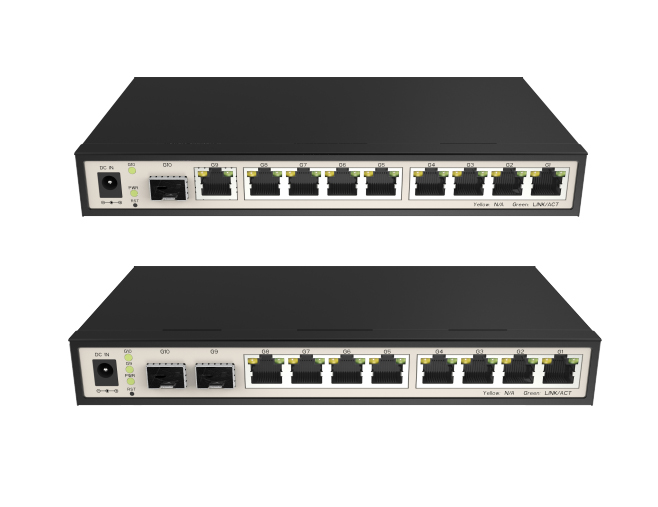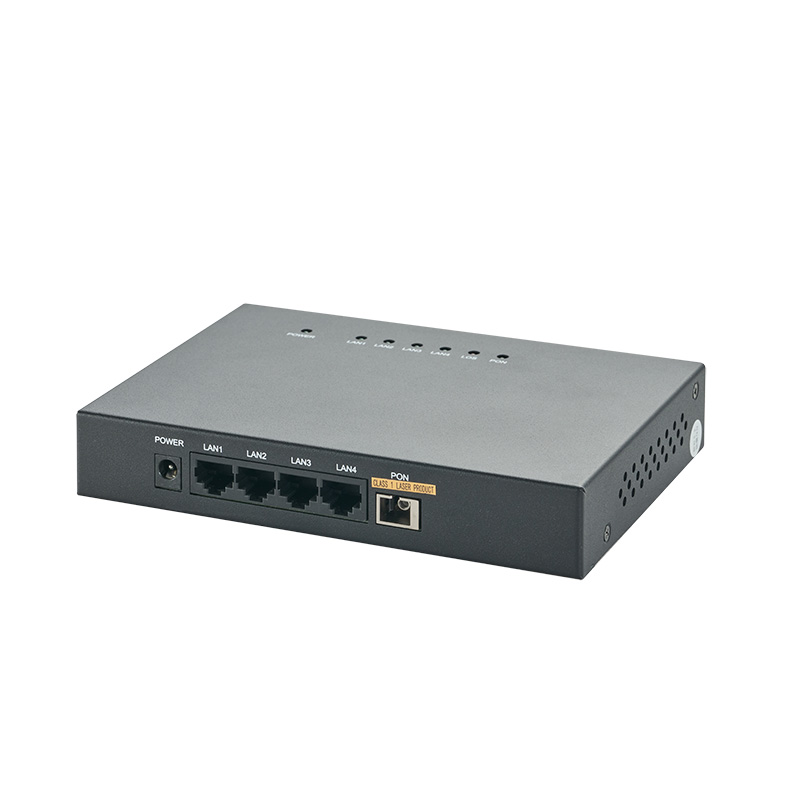As the two most important distribution network communication solutions at present, industrial Ethernet switch and industrial EPON have their own characteristics. Here is a brief introduction to the differences between them.
Industrial Ethernet switch is also called Industrial Switch, that is, Ethernet communication equipment applied to industrial Internet and industrial digital intelligent control field. Because of the standard TCP/IP network, it has good openness, wide application, high performance and high reliability, Ethernet communication technology has become the main communication standard in industrial control field. EPON (Ethernet Passive Optical Network), as its name implies, is a PON technology based on Ethernet. It adopts point to multipoint structure, passive optical fiber transmission, and provides multiple services over Ethernet. EPON technology is standardized by IEEE802.3 EFM working group. In June 2004, the IEEE802.3EFM Working Group issued the EPON standard IEEE802.3ah (incorporated into the IEEE802.3-2005 standard in 2005). In this standard, Ethernet and PON technologies are combined, PON technology is used in the physical layer, Ethernet protocol is used in the data link layer, and PON topology is used to achieve Ethernet access. Therefore, it combines the advantages of PON technology and Ethernet technology: low cost, high bandwidth, strong scalability, compatibility with existing Ethernet, convenient management, etc.
EPON (Ethernet Passive Optical Network), as its name implies, is a PON technology based on Ethernet. It adopts point to multipoint structure, passive optical fiber transmission, and provides multiple services over Ethernet. EPON technology is standardized by IEEE802.3 EFM working group. In June 2004, the IEEE802.3EFM Working Group issued the EPON standard IEEE802.3ah (incorporated into the IEEE802.3-2005 standard in 2005). In this standard, Ethernet and PON technologies are combined, PON technology is used in the physical layer, Ethernet protocol is used in the data link layer, and PON topology is used to achieve Ethernet access. Therefore, it combines the advantages of PON technology and Ethernet technology: low cost, high bandwidth, strong scalability, compatibility with existing Ethernet, convenient management, etc.
Different protocol standardization
The standard of EPON was officially released in 2004, and the standard of industrial EPON has been gradually improved in recent years. Therefore, the standardization of many specific implementation details needs to be unified, such as dynamic bandwidth DBA algorithm, ranging implementation method, encryption algorithm, etc. As far as the current state is concerned, interoperability still has certain risks, which will take a while.
The Ethernet switch has been mature and commercially used for many years, and its protocol standardization has been completed, including the underlying protocol, network redundancy protocol, management protocol, network precise clock transmission protocol, etc. The products of different manufacturers have good interoperability and can realize hybrid networking.
Different networking methods
Industrial Ethernet switches mainly adopt segmented redundancy, intersecting ring, tangent ring and other methods to improve the reliability of networking, and have weak ability to resist multi-point failure. In its peer-to-peer communication mode, the failure of a single node will not have a fatal impact on the whole network. By selecting appropriate optical modules, the transmission distance can reach 100 kilometers. For capacity expansion, the industrial Ethernet switch of the connected node needs to be replaced to support more optical ports, and the cost will increase.
 EPON can form a point to multipoint network mode through the optical splitter, which is very suitable for the actual distribution of the distribution network. Each ONU is connected in parallel, which has strong ability to resist multi-point failure. Its possible disadvantage is that all business processing is concentrated on the OLT, and the stability of the OLT is crucial. After the failure of the OLT, the whole network will be paralyzed, and the communication between the underlying nodes will also be interrupted. Due to the insertion loss of the optical splitter, the network cannot be too large, and the maximum length cannot exceed 20km. For the expansion of new nodes, it is convenient to replace the optical splitter.
EPON can form a point to multipoint network mode through the optical splitter, which is very suitable for the actual distribution of the distribution network. Each ONU is connected in parallel, which has strong ability to resist multi-point failure. Its possible disadvantage is that all business processing is concentrated on the OLT, and the stability of the OLT is crucial. After the failure of the OLT, the whole network will be paralyzed, and the communication between the underlying nodes will also be interrupted. Due to the insertion loss of the optical splitter, the network cannot be too large, and the maximum length cannot exceed 20km. For the expansion of new nodes, it is convenient to replace the optical splitter.
Different degrees of industrialization
The concept of industrial Ethernet has been put forward since 2000. After more than ten years of rapid development, the entire industry chain is very mature, whether from chips or markets. EMC, high and low temperature and other industrial characteristics can fully meet industrial needs, and have been widely used in markets other than distribution networks. As a relatively new technology, EPON has been industrialized for a short time, and is mainly concentrated in the power industry, with insufficient practical operation experience. The optical splitter is a passive device with high stability.
However, OLT and ONU are active devices, and their industrialization is not as good as industrial Ethernet devices.
Different network management methods
Industrial Ethernet switches can be divided into two types according to whether they support SNMP protocol: managed type and unmanaged type. Unmanaged switches cannot realize any form of communication detection and redundancy configuration functions. Compared with the unmanaged switch, the managed switch has more and more complex functions, and its price is much higher, usually 3 to 4 times that of a unmanaged switch. Managed switches provide more functions, and can usually be fully configured through network-based interfaces. It can automatically interact with network devices, and users can manually configure the network speed and flow control of each port.
Managed switches can be managed in three ways: RS-232 serial port (or parallel port) management (or out of band network management), web network management, and SNMP network management software management (or in band network management). Which way? When the switch is initially set up, it is usually managed out of band; After setting the IP address, you can use the in band management mode. In band management can realize remote management because the management data is transmitted through the public LAN, but the security is not strong. Out of band management is communicated through a serial port, and data is only transmitted between the switch and the management computer, so the security is strong; However, due to the limitation of serial cable length, remote management cannot be realized. So the way you choose depends on your requirements for security and manageability.
Epon usually consists of OLT, ONU and splitter. Generally, OLT supports SNMP protocol, but ONU does not support SNMP, or even does not have an IP address. The optical splitter is completely passive and does not support any form of management protocol. Therefore, for the operation and maintenance management of EPON network, the OLT can be managed through SNMP network management software, and the ONU is attached to the OLT device in the form of device resources. The relationship between them is one to many, and they communicate through OAM extended message. The NMS does not communicate directly with the ONU. All configurations must be issued through OLT. Since the optical splitter is a passive device, it can only be managed manually by the management personnel. For Epon networks of different manufacturers, through the secondary development of our NIS network management software, the remote management, operation and maintenance of Epon networks can also be well realized.
In general, industrial Ethernet switch and industrial EPON, as two mainstream communication methods of distribution network, have their own characteristics and are currently applied in the pilot stage. In the future, according to the actual situation of different projects, they should also have their own advantages and co-exist for a long time.
Contact: sales
Phone: 18688787693
E-mail: sales@hsindustrialswitch.com
Add: Room 608, Building B,GaoXinQi TEC Park,Baoan District, ShenZhen,China